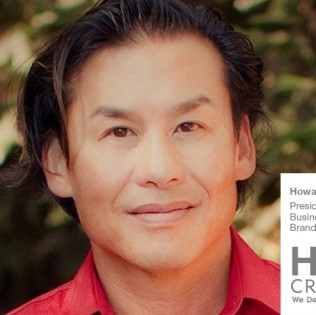by Ryan Pereira
Published on March 5th, 2015
Canadian LNG on Ice? Where Will the Puck Stop?
“Skate to where the puck is going, not yo where it has been” Can Canadian LNG learn from Gretzky?
For anyone who follows ice hockey, Wayne Gretzky needs no introduction. A former Canadian professional player, head coach and legendary national hero from 1979 to 1999, Gretzky represented four teams over 20 seasons in the National Hockey League (NHL). When he retired in 1999 - his jersey, number 99, was retired league-wide with him — he was the holder of 61 NHL records. Called the greatest ice hockey player ever, he was famously nicknamed “The Great One”.
Maybe Canada’s LNG industry should take a page from Gretzky’s playbook, taking note of his insightful quote when he said, “Skate to where the puck is going, not to where it has been”.
American? Canadian? Eastern? Western? Who will top the LNG Export League?
Ongoing rivalry in USA and Canada is notorious, with each country claiming global dominance in hockey. During the past 3 years, we’ve seen a similar battle royal between the Lower 48 (typically Gulf Coast LNG export projects) and a similar array of would-be-exporters on the West Coast of Canada in British Columbia. Each group is claiming to be the natural choice for Asian markets; the gateway to the Pacific for North American natural gas reserves.
During the past year, the 15 Canadian West Coast projects (totalling in excess of 150mmtpa of exports, equivalent to more than 60% of current LNG global annual demand) have been gearing up for imminent investment decisions. At the time of writing, only one third of these players haven’t yet taken a breather on the bench. Is this disappointing, inevitable or just Darwin’s survival of the fittest? Meanwhile, six LNG players in the Lower 48 Gulf Coast expect to export LNG by 2020.
Perhaps the most dramatic hockey parallel, in recent times, was Canada’s Olympic Gold Medal final in Vancouver in 2010 when Sidney Crosby scored his sudden-death goal in overtime - it feels like Canadian LNG could use Crosby’s help right now…
- 2008: Alaska planning to pipe 4 Bcf per day of natural gas through Canada to the Lower 48.
- 2009: As many as 50 USA LNG import projects had been identified by industry.
- 2017/18: USA expected to become a significant LNG exporter by 2017/18.
- 2020: US Lower 48 is expected to become the third largest global exporter of LNG.

Skate west or skate east? Where will the Canadian puck land?
With so many competing projects around the world, LNG buyers might be forgiven for being confused about which project to back.
Given recent announcements of delays and deferrals to the Petronas (PNW LNG), BG (Prince Rupert LNG) and Chevron (Kitimat LNG) projects on Canada’s West Coast, one might be fooled into thinking that there was no good news to spread around in Canada.
On the East Coast, however, Repsol is considering a reversal of the regasification plant in New Brunswick it owns with Irving Oil Ltd. One factor behind this reversal may be the year-on-year growth we are still seeing from the Marcellus and Utica unconventional resources in Pennsylvania and Ohio, which has exceeded Northeast American demand and has displaced natural gas in Eastern Canada. Together with increased coverage regarding the Goldboro LNG Project in Nova Scotia, and the adjacent Downeast LNG Project on the Canada-US border, there is definitely increased adrenaline on what-just six months ago-would have been called Canada’s ‘quieter’ LNG coast.
Are Europeans bigger fans of the Eastern Conference?
While Asian spectators have been slow to commit to Canada’s West Coast Canada LNG projects, European spectators have been watching the Canadian LNG game with increased interest. One of the major incentives for European buyers is the considerably shorter shipping distance that the East Coast Canada projects can offer, as compared to those situated along the US Gulf Coast. An illustration of this attraction was evidenced by last year’s agreement between Eon and Goldboro LNG.
Increasing uncertainty and unease about dependence on Russian gas in Europe casts Eastern Canadian LNG in a more favourable light, offering some interesting
possibilities. One thing is for sure: Diversification, and not just security, of supplies, is essential to purchasers. Accordingly, East Coast LNG is definitely a game to be watched, even if spectators choose not to fanatically support it.
$$$ Short term prices… Up a puck, or down a puck… Does it really matter ?
Falling oil prices continue to send shockwaves across the globe. Does this mean that capital will flee and that projects will be put on hold? Or should investors take a long term view? Most companies have investors to please, and short-term cashflow and profitability to protect as well. This investor focus on the annual-even the next quarter-rate of return may be in conflict with the long-term view.
NHL championships are not won in one game, but rather over a long and hotly-contested season. Gretzky did not become known as “The Great One” during one great season, but rather over 20 seasons of delivering consistently great results. Similarly, LNG investments involve projects that will generate returns over time horizons spanning 20/30/40 years or longer.
So Is Canadian Lng Chilling On Ice, Or Is It In A Deep Freeze?
Several factors make it difficult to tell where the puck is going to stop. “The Great One” undoubtedly had a natural talent. However, LNG players should emulate the dedication and hard work that Gretzky put into knowing and working his teammates (JV partners, government relations, first nations, project sponsors), studying his opposition and its likely moves (competition, global economic conditions, supply-demand dynamics), assessing ice conditions (timing will be key), and, perhaps most of all, playing to his strengths (and despite the recent deferral announcements, Canada does have a lot of potential muscle in the LNG game).
Canada’s West and East coasts have the potential to be winners in the NHL-LNG game, providing a new vehicle for LNG to “come home” to Europe. Canada, however, also runs the risk of landing in the penalty box and being frozen out by the global competition if it continues to travel to where the puck is or has been, rather than to where it is going to be…
For more information on Global Gas and LNG please contact Ryan Pereira, Principal Commercial Manager - Global Gas & LNG, Gaffney, Cline & Associates. ryan.pereira@gaffney-cline.com, www.gaffney-cline.com
Did you enjoy this article?



 Marketing Lessons To Be Learned From Our Federal Election!
Marketing Lessons To Be Learned From Our Federal Election! What Makes Oil Companies Likeable?
What Makes Oil Companies Likeable? Rediscovering Black Gold
Rediscovering Black Gold A Glance Into Sheryl Sandberg’s “Lean In: Women, Work, And The Will To Lead”
A Glance Into Sheryl Sandberg’s “Lean In: Women, Work, And The Will To Lead”
